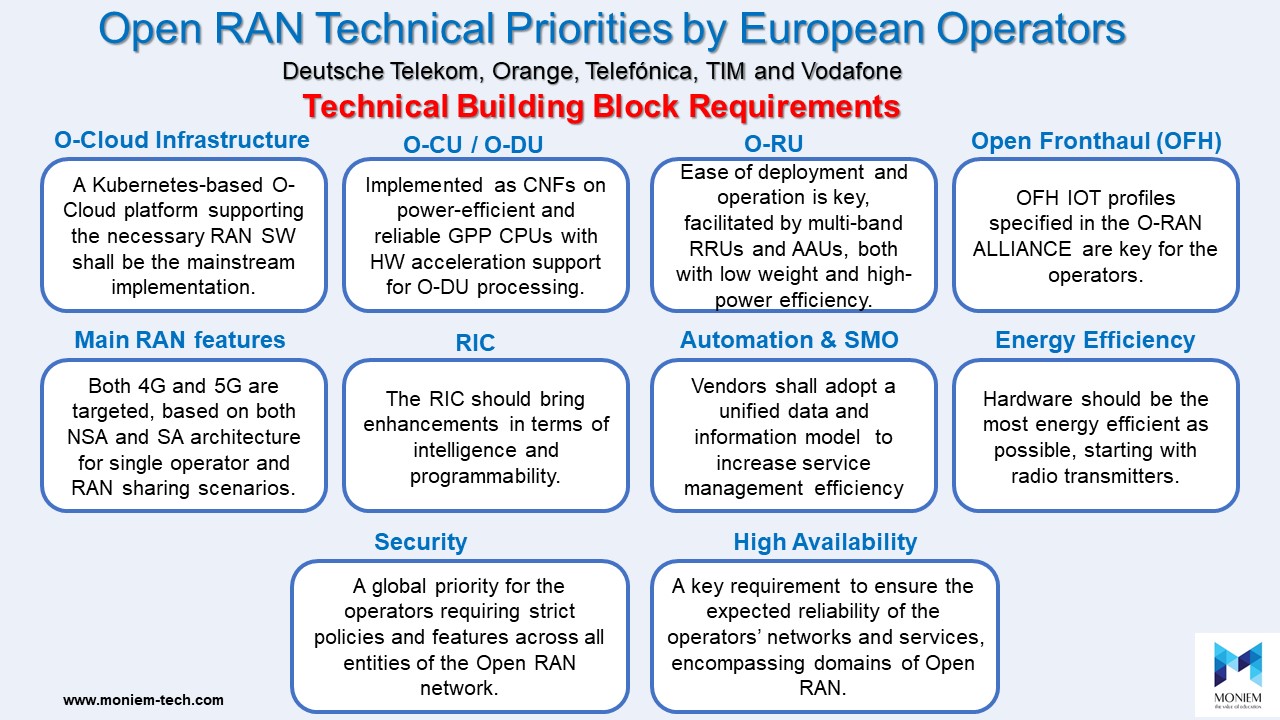On January 2021, Five big European operators, Deutsche Telekom AG, Orange, Telefónica, Vodafone Group and TIM (which joined in Feb 2021) are signed Memorandum of Understanding (MoU) to provide a framework for a specific commitment to support the development of a non-fragmented global OPEN RAN ecosystem for deployment across the European network footprint of each of the signatories, and to start operation as soon as solutions become mature enough for a given targeted use case.
This MoU will continue until 31st December 2024, when it shall terminate automatically without notice. This Term can be extended by mutual agreement of the signatories of this MoU.
Why Open RAN in Europe?
- OPEN RAN will be a key technology for modern mobile networks and its success requires strong timely collaboration and support from both industry and policy makers in order to achieve early economies of scale.
- Usage of OPEN RAN technology will lead to a more competitive 5G environment enabling supplier diversification in Europe as per EU 5G Security Toolbox guidelines and more flexibility for industry to innovate and differentiate.
- Promoting the development and recognition of OPEN RAN specifications and standards is necessary to accelerate the emergence and maturity of a single and consistent OPEN RAN ecosystem under common OPEN RAN architecture and requirements in order to enable a true multi-vendor environment in Europe.
- The development and implementation of OPEN RAN will have a positive impact on the European Telecommunication market with the transformation of existing vendors and the creation of new companies and start-ups towards a future-proof model.
- OPEN RAN technology is an opportunity to maintain and further develop the role of the European Telecommunication and the digital markets, while making European networks more resilient and flexible.
Open RAN Technical Priorities by European Operators
The primary objective of the European operators working under the Open RAN MoU is to guide and foster the development of a non-fragmented Open RAN ecosystem and vendors’ roadmaps while ensuring Open RAN reaches parity with best-in-class traditional RAN solutions.
There are 3 main focus areas for the architecture, spectrum and interfaces as below:
- Macro deployment is the primary target for the operators, with a virtualized infrastructure hosting O-CU/O-DU functions, and Open Fronthaul support as a baseline requirement.
- The focus should be on 4G/5G, as specified by the O-RAN ALLIANCE, operating in 3.4 – 3.8 GHz and legacy FDD bands.
- The Open Fronthaul interface is key to enable a disaggregated, multi-vendor RAN with a common management framework.
Technical Building block requirements
There are main 10 technical building block requirements as below:

Open RAN is one of the most important evolutions of the mobile access network being developed internationally. This is an initiative led by the Open RAN Alliance, the international group which has been bringing some of the leading telecommunications operators together since February 2018. The aim is to develop mobile infrastructures with open interfaces, thus facilitating collaboration between different actors.
